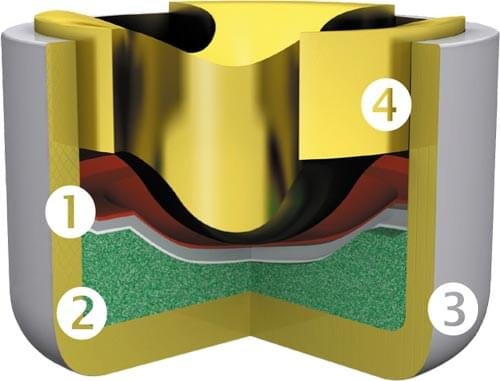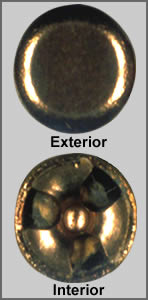The Best Guide To Pistol Primers
Table of ContentsThe Single Strategy To Use For Remington PrimersPistol Primers for DummiesWinchester Primers Can Be Fun For AnyoneThe 7-Second Trick For Reloading PrimersThe 3-Minute Rule for Primers For Sale
Component of the firearm cartridge for starting propellant combustion In firearms as well as weapons, the guide () is the chemical and/or tool in charge of starting the propellant burning that will certainly push the projectiles out of the weapon barrel. In very early black powder guns such as muzzleloaders, the primer was essentially the same chemical as the main propellant (albeit typically in a finer-powdered kind), however poured into an exterior flash pan, where maybe stired up by an ignition resource such as a slow match or a flintlock though some muzzleloaders have primers like cap weapon caps. reloading primers.
Examples consist of pistol cartridges, rifle cartridges, and shotgun shells. Larger weapons items in contrast generally utilize electrical priming. In weapons the guides are frequently a different part, put inside the barrel to the rear of the main propellant chargebut there are various other instances of guns, consisting of for instance some automated tools, created to fire cartridges with important electric guides.
The Greatest Guide To Cci Primers

This opening was loaded with finely ground powder, which was after that ignited with a warm ash or torch. With the advent of hand-held guns, this became an unfavorable way of firing a weapon. Holding a burning stick while attempting to pour a charge of black powder carefully down a barrel is hazardous, and trying to hold the gun with one hand while simultaneously aiming at the target and also searching for the touchhole makes it very tough to fire precisely. [] The first effort to make the procedure of shooting a tiny arm simpler was the "matchlock".
The suit was a slow-burning fuse made of plant fibers that were taken in a service of nitrates, charcoal, as well as sulfur, as well as dried out (https://www.directorystock.com/author/relodprim3rs/). This "slow-match" was sparked before the weapon was required, and it would gradually shed, keeping a hot ash at the burning end. After the gun was filled as well as the touchhole topped with powder, the burning suggestion of the suit was placed so that the lock would certainly bring it right into call with the touchhole.
Some Known Incorrect Statements About Rifle Primers
This brought the suit down to the touchhole, firing up the powder. With cautious interest, the slow-burning match could be linked here kept melting for lengthy durations of time, as well as the use of the lock system made fairly exact fire feasible. The following change in ignition modern technology was the "wheel-lock". It made use of a spring-loaded, serrated wheel which scrubed against an item of iron pyrite, similar to a modern-day lighter.

The covered flashpan likewise provided some capacity to endure negative climate. The wheel-lock appreciated just a short duration of appeal prior to being superseded by an easier, extra durable layout.
The Definitive Guide to Federal Primers
The flint was held in a spring-loaded arm, called the "penis" from the similarity of its activity to a pecking hen. The penis turned via roughly a 90-degree arc and was held in the tensioned, or "cocked" setting by a trigger.
The "half-cock" setting held the dick midway back, and also made use of a deep notch so that shooting would not launch the dick. Half-cock was a safety position, made use of when filling, storing or carrying a loaded flintlock. The "full-cock" setting held the dick all the method back and was the placement from which the weapon was fired.
It worked as both a flashpan cover and a steel striking surface for the flint. The frizzen was pivoted and also spring-loaded to make sure that it would certainly secure in the open or closed placement. When shut, the striking surface area was placed to ensure that the flint would certainly strike at the correct angle to produce a stimulate.
Not known Details About Small Pistol Primers
The flintlock mechanism was simpler and stronger than the wheel-lock, as well as the flint and steel offered a good, trustworthy source of ignition. The flintlock stayed in military service for over 200 years, and also flintlocks are still made today for historic re-enactments and also muzzle-loading target competition, and also for hunters that delight in the added difficulty that the flintlock offers.
Percussion ignition was invented by Scottish clergyman Rev. Alexander John Forsyth in 1807 however needed even more improvements before it was slowly approved in the 1820s to 1830s. By the center of the 19th century, the percussion or caplock system was well developed. It was adopted by both sides in the American Civil War, as it was simpler and also more trustworthy than the flintlock.
The flashpan and also frizzen were eliminated as well as replaced by a small, hollow straight cylinder (drum) screwed into the bored-out as well as tapped flash hole and also lugging a "nipple" over which the cap might be fitted. A "hammer" which additionally had half-cock (for packing and also applying the cap) and also full-cock positions replaced the dick.